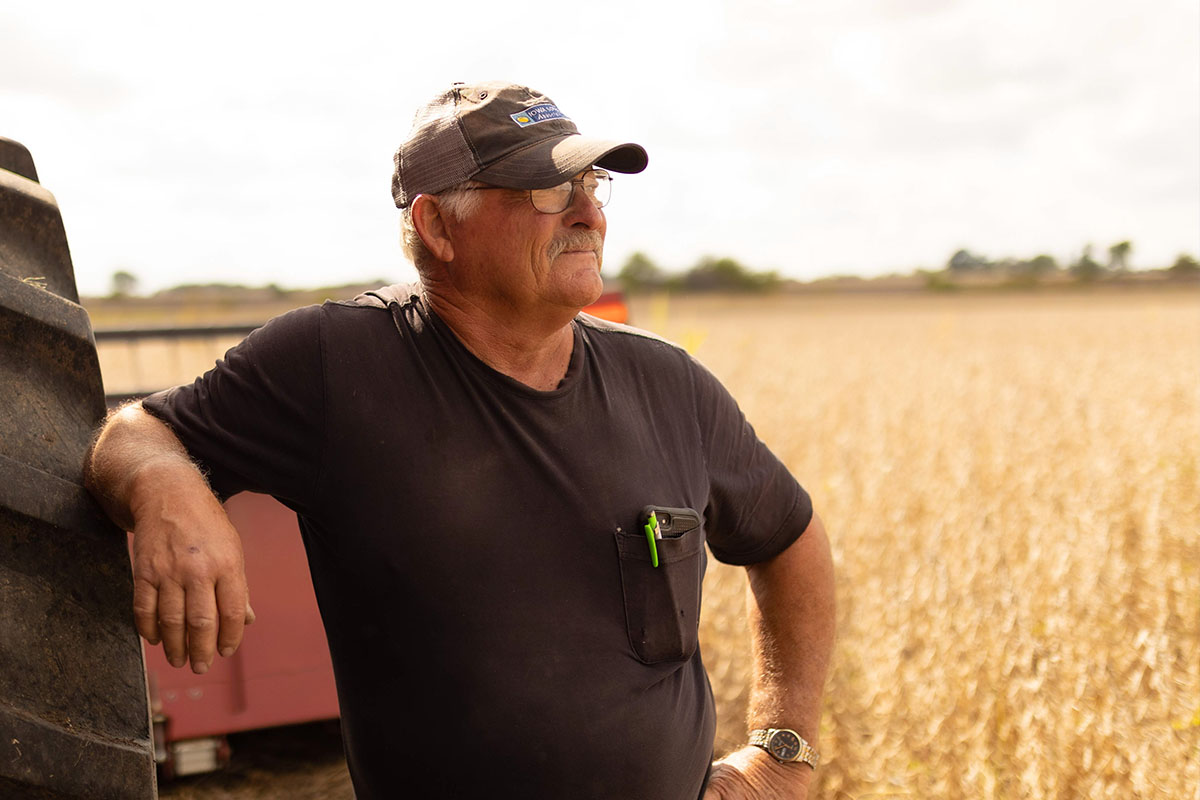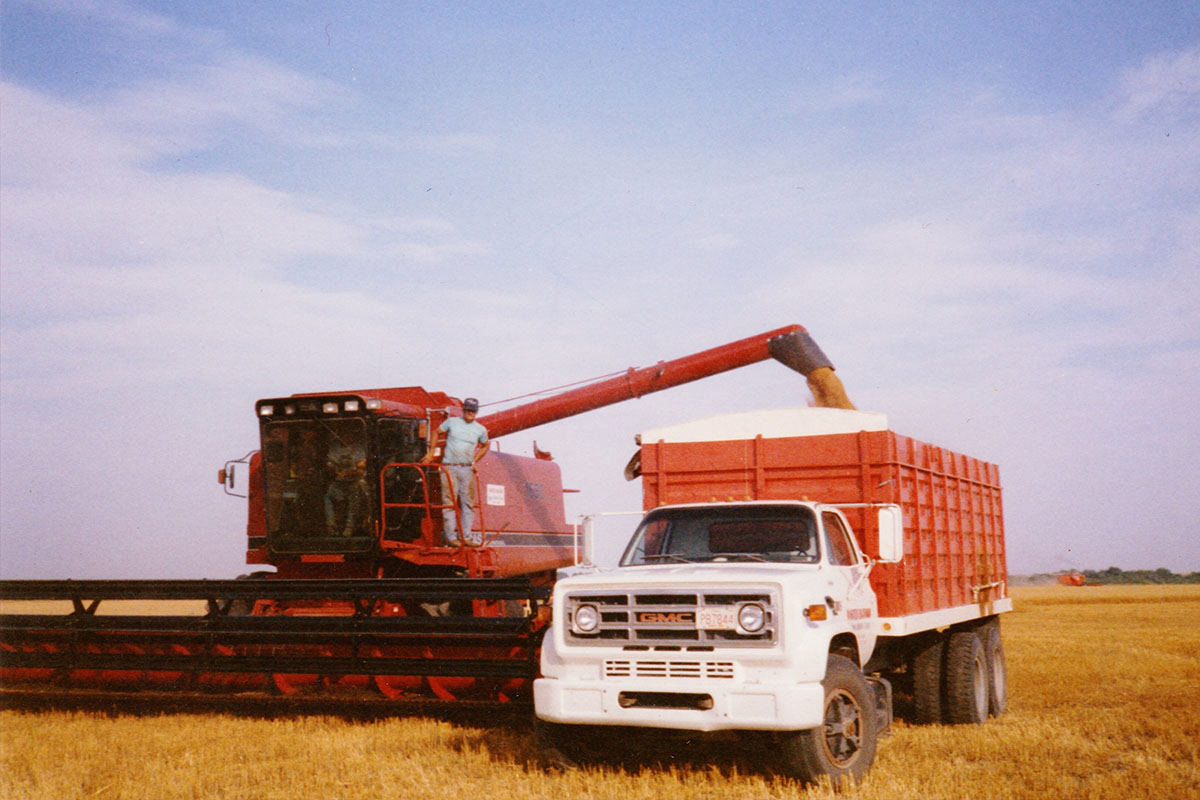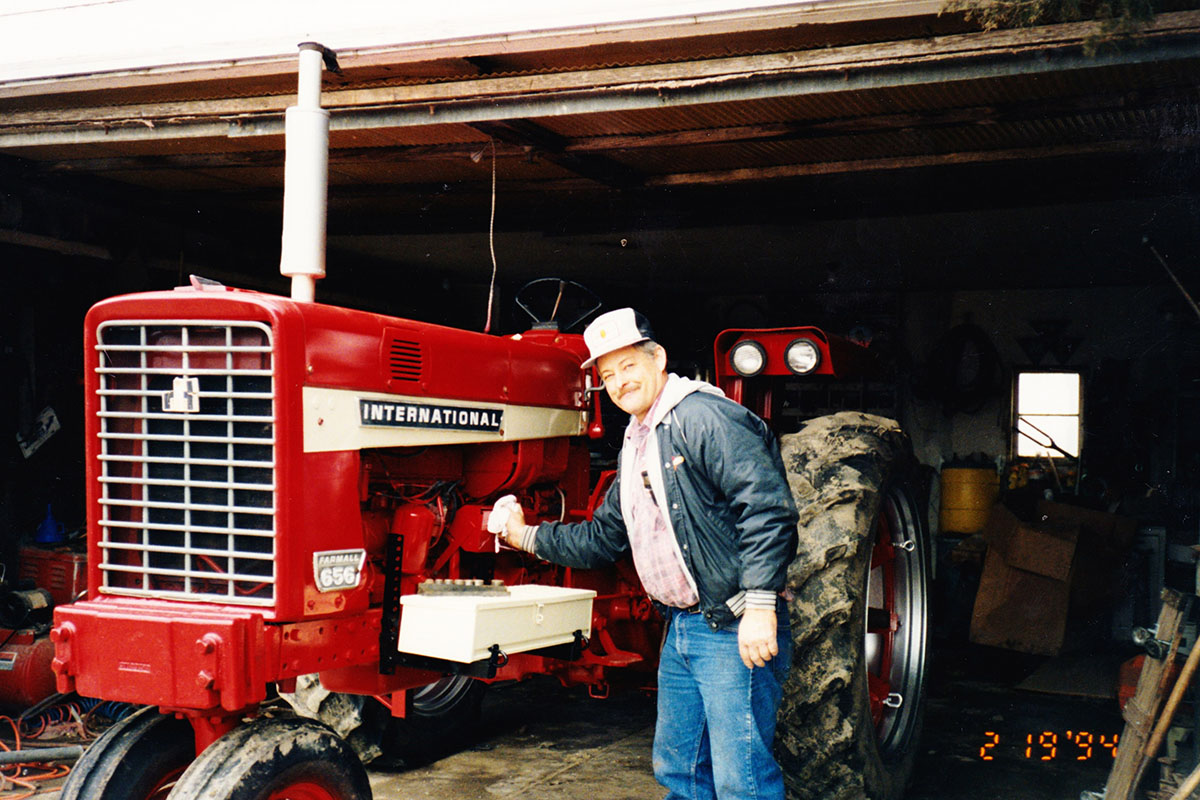
(Photo: Joclyn Bushman/Iowa Soybean Association)
A Diamond Anniversary
November 2, 2021 | Bethany Baratta
Long before the Iowa Soybean Association (ISA) moved its center of operations to Ankeny, ISA District 8 Director Warren Bachman farmed the piece of ground that was transformed into the state’s soy headquarters.
That was 60 harvests and several pieces of machinery ago.
Bachman got his start farming through FFA.
“As a freshman in high school, I planted and harvested my first crop, ”he says.
Bachman was raised on an acreage near Ankeny. His father was a rural mail carrier, and his mother worked at a local Farm Service Agency office.
He valued helping his FFA chapter grow and harvest crops, eventually doing custom work and farming 50 acres when he graduated from Ankeny High School.
He knew then he wanted to make farming his life’s work.
“If it weren’t for my FFA advisor— Mr. Jim Meyer — I wouldn’t be farming,” he says.
He and his former advisor, who farms near Odebolt, still connect, sharing farming stories and information about Roof Maxx, a soy-based product Meyer’s homeowner association board now uses to extend the life of its roofs.
Sitting around the family’s kitchen table at their home in Osceola, Bachman reflected on the differences in farming today versus 60 years ago.
In 1961, the average Iowa soybean field averaged 28.5 bushels per acre. Prices averaged $2.28 per bushel. In 2020, Iowa soybean farmers harvested an average 54 bushels per acre. Prices averaged $11 per bushel.
However, the costs of inputs to grow the higher-yielding crops have also increased.

Diversification matters
Diversification of income streams, Bachman says, has enabled he and his wife Linda to continue farming for several decades.
Bachman’s owned tandem trucks since 1969, allowing him to haul the soybeans and corn off the farm and to the elevator or off-site storage in hopes of fetching better prices.
In 1980, he started hauling seed corn, milo and bromegrass to and from Nebraska, Iowa, Kansas, South Dakota, Colorado and Texas.
For three months out of the year, Bachman was hired to cut wheat from the Oklahoma/Texas line all the way up to the North Dakota/Canada border. Linda was an elementary and high school music and journalism teacher and joined Warren for several wheat harvests.
Bachman did this for 27 years and estimates he’s owned more than 50 combines in doing so.
“You might spend 200 hours on a combine in Iowa, but during wheat harvest it was more like 1,000 hours per season,” Bachman says. “Time was of the essence, and you were 700 miles from home, so it was critical to have larger, reliable combines to get the job done.”
His fleet of combines used for harvesting soybeans and corn on his farm hasn’t been as extensive, he says. However, he is a collector of antique tractors and owns more than 90 of them.
Harvesting equipment has also changed in the past six decades, he notes. The first combine he used in high school was a John Deere, 2-row PTO pull type. He harvested corn with a Minneapolis-Moline one row corn picker. The first self-propelled combine he bought was a 1969 Massey 410 with a 4-row corn head. The most recent purchase: a Case IH with a luxury cab. This year, he harvested with a 6-row corn head and 25-foot bean head.
Farming practices have also changed, better reflecting Bachman’s care of the soil and water quality. He utilizes no-till, cover crops, contour farming, terraces and waterways to promote soil health and water quality.
“Our ground is pretty hilly here. So in 1984, we started putting terraces in, and we’ve built some almost every year since,” Bachman says. “With cover crops, we’re building soil health and organic matter.”

Full circle
The connection to the farm that became the site of ISA came full circle six years ago when Bachman was elected as a district director of the farmer-led, farmer-focused organization.
The experience has grown his understanding of how his checkoff dollars are spent and the many ways ISA is involved in programs that expand the marketing opportunities for the soybeans he raises on his farm near Osceola.
Being involved in the Soy Transportation Coalition, for example, brings awareness and understanding of the importance of infrastructure in marketing soybeans globally.
The use of soybean oil in biodiesel and renewable diesel expands opportunities in selling soybean oil, once a glut on the market.
“I can remember the noon farm report saying that nobody was taking soybean oil because there wasn’t a use for it,” Bachman says. “Now, that market has changed about 180 degrees.”
Soybean oil makes up nearly 90% of the feedstocks used to produce biodiesel; biodiesel demand accounts for 13% of the net market value of soybeans, or $1.69 per bushel, when cash prices hit $13.
Grateful heart
Bachman has taken steps toward retirement, giving up the wheat harvest and seed hauling business to focus on his farm. He isn’t sure how many harvests are in his future, but he’s grateful for the 60 he’s been blessed with.
“I’m thankful that we’ve been able to grow, that I’ve never had to go to work,” Bachman says. “It’s work farming, but it’s what I wanted to do, so in a sense, I’ve never had to go to work.
“Farming is the only thing I ever really wanted to do, and I was lucky enough to get to do it.”
Back